The rapid evolution of genotyping and sequencing technologies means that genetic variation data are becoming readily available in the large populations necessary for research into the aetiology of complex traits and disorders. Now, rather than being limited by genotyping, we are starting to be restricted by the availability of phenotypic and environmental information. To understand the dynamics of genetic influences across development and in different contexts, we must develop new approaches that will complement traditional questionnaires and clinical data to give us affordable, repeatable and detailed assessments on a scale to match our vast repositories of genetic data.
TWIST
Genetic and environmental influences are dynamic. Our spACE project has shown how the importance of genes and environments can vary depending on where we grow up, and our longitudinal analyses have shown that for several traits heritability tends to increase with age. We wanted to take this a step further by exploring what happens to genetic and environmental influences when we experimentally change the environmental context through an intervention.
PhD studentship available
![]()
We have a PhD studentship available to start October 2017 as part of our EMBERS project, funded through the Medical Research Council (MRC) GW4 BioMed Doctoral Training Partnership (deadline 9.30am 8th June 2017):
Tracking dynamic genetic and environmental influences on mood in young adults through social media analysis
A fascinating finding from human genetics is that for many complex traits the balance of nature and nurture is not fixed, but can vary in response to different life stages or environments. This project will study how genetic and environmental influences on mood vary across emerging adulthood using high-resolution time course data from social media.
This project would suit a student who wishes to develop interdisciplinary skills in behavioural science, genetics and data science, using big data from social media and the human genome. You will be based at the MRC Integrative Epidemiology Unit at the University of Bristol, in the Dynamic Genetics lab.
Born around the same time as the commercial Internet, today’s emerging adults are the Internet generation, with most engaging frequently with their real-life peer groups through online social networks. For this generation, online social networks are integrated with offline networks, and are an important source of social support and interaction. If we are to understand social influences on mental health and disorder in this or future generations of adults, then we must take notice of online, as well as offline social activity. But although offline social networks are difficult to assess and track, online social networks are detailed databases of real-time social activity. Since social networks are an important factor in both positive and negative behaviours, with peer influence leading to outcomes such as depression, obesity and positive mental wellbeing, learning about these interactions is crucially important to our understanding of mental health and wellbeing.
The rapid evolution of genotyping and sequencing technologies means that genetic variation data are becoming readily available in the large populations necessary for research into the aetiology of complex traits and disorders. Now, rather than being limited by genotyping, we are starting to be restricted by the availability of phenotypic and environmental information. To understand the dynamics of genetic influences across development and in different contexts, we must develop new approaches that will complement traditional questionnaires and clinical data to give us affordable, repeatable and detailed assessments on a scale to match our vast repositories of genetic data.
Fortunately, new digital technologies can help us to do that. Our EMBERS (Emotion Monitoring by Electronic Remote Sensing) project uses online social networks and other electronic resources to collect high-resolution phenotypic and environmental data in genetically informative population samples. For example, we have collected over five million tweets from 2,500 participants in the Twins Early Development Study (TEDS). By comparing scores automatically coded from their tweets with standard questionnaire data collected at the same time, we have been able to establish the effectiveness of Twitter data for measuring positive and negative mood in emerging adulthood. This project will use these data to track the dynamics of genetic and environmental influences on positive and negative mood through this important life stage. The findings will help us to understand the complex aetiology of mental health and disorder, and how important influences evolve across time and in response to events.
You can apply for the studentship through the MRC GW4 BioMed DTP web site before 9.30am on Thursday 8th June 2017. For more information or an informal discussion before you apply, contact Oliver Davis or Claire Haworth.
Computational behavioural genetics
https://www.youtube.com/watch?v=ONcbeK6FzcU
I was asked to give a fifteen-minute talk on Computational Behavioural Genetics at Europe’s first Computational Social Science conference at the University of Warwick last year. It was recorded for Warwick’s Big Data MOOC, and the organisers, Suzy Moat and Tobias Preis, have kindly allowed us to re-post it here. Thanks, guys!
Is happiness in our genes?
In this three-minute video, I talk about our Twins Wellbeing Intervention Study, TWIST. There’s more about TWIST, as well as my answers to the questions I raise here, as part of the University of Warwick’s What Makes Us Happy series.
Why nurture is just as important as nature for understanding genetics

We live in the age of the genome. Hardly a week goes by without a story about how genes influence our health or behaviour. There has been recent excitement around new advances in the genetics of schizophrenia, and genetic overlap between reading and maths. In the UK, the government is also pushing forward plans to map 100,000 genomes that will be matched to clinical data to drive “genomic medicine as part of routine care” in the NHS.
But genetic variation is only half the story. Environmental influences are important too, and we now know that our environments can interact with our genetic makeup, in ways that can be good and bad for our health.
One of the most striking findings from genetics research is that the influence of genes isn’t fixed. Even though our DNA sequence remains the same, the impact our genes have on us can alter with age and with the different environments we experience. Epigenetics, where the environment can change the expression of a gene without changing DNA, is only a small part of a whole field of science looking at changes in heritability due to interactions between genes and environment.
For example, we know that the importance of genetic influences for body weight increases as we get older. Genetic variation accounts for 48% of the differences between people in early childhood but by adolescence this rises to 78%. These estimated figures, from a study of thousands of twins in the Twins Early Development Study, have now been confirmed using analyses of DNA.
In fact, we see increasing heritability with age for many other human characteristics, such as IQ, where the importance of genes increases from 41% in early childhood up to 66% by young adulthood.
Drawing out genetic potential
One of the main mechanisms behind the increasing role of genetics as we get older is choice: we have more control over what we’re exposed to. We can choose whether to have a doughnut for lunch, whether to visit the library, or whether to cycle to work. These environments don’t just happen to us. To some extent we control, select and create our experiences and exposures. And because our genes can influence these choices too, we find ourselves in places and situations that in a sense draw out our genetic potential.
Our recent work tells us that the importance of genes and environments on childhood behaviour varies depending on where we grow up, shown in a series of UK maps of genetic and environmental influences for 45 childhood traits. For example, environmental influences were more important for disruptive classroom behaviour in London, compared to the rest of the UK.
The challenge now is to try and understand what in the environment can create these geographically distributed effects, because for this analysis at least, we know that genetic differences cannot explain these differing patterns.
The interplay between nature and nurture means that identifying which genes and which environments are having an effect is difficult; turning an already complex system, that links DNA with human behaviour, into a network of genetic and environmental pathways and intersections. But if we’re to understand the mechanisms behind these effects, and to develop ways of preventing disease or promoting better outcomes or behaviours we’ll have to get to grips with it.
One of the simpler examples is phenylketonuria, a disease where a defective variant of a gene means patients are not able to break down the amino acid phenylalanine, which builds up to toxic levels that affect brain development. Only by understanding the interaction between the gene and the presence of phenylalanine in our diets were researchers able to identify an effective treatment for a genetic disease: removing this amino acid from what affected children eat.
The diet is difficult to stick to, but it shows that it is sometimes possible to overcome genetic disease by changing the environment. More complex disorders that are influenced by many genes and many environments will of course need more complex interventions, and will probably have complicated mechanisms for us to unravel. But focusing on genetics alone means we will not fully understand these systems or processes.
Identifying which genes influence disease is important, but it’s just the first step. As we invest more in genetic research, we need to keep context in mind too. We should invest just as heavily in new methods for tracking and analysing behaviour, environments and health outcomes to the same degree of detail as we are now studying DNA. And that includes remaining open-minded about initiatives such as the NHS’s care.data, which would allow researchers access to more detailed information about our health outcomes.
The past 15 years have seen unprecedented and unexpected advances in genetic science. We should not underestimate the parallel advances we will make by understanding environmental influences and the way they interact with our genetic makeup. Nature and nurture are both important. We must be just as ambitious about understanding nurture as we are about understanding nature, because only by joining the two will we see the full picture.
![]()
This article was originally published on The Conversation. Read the original article.



